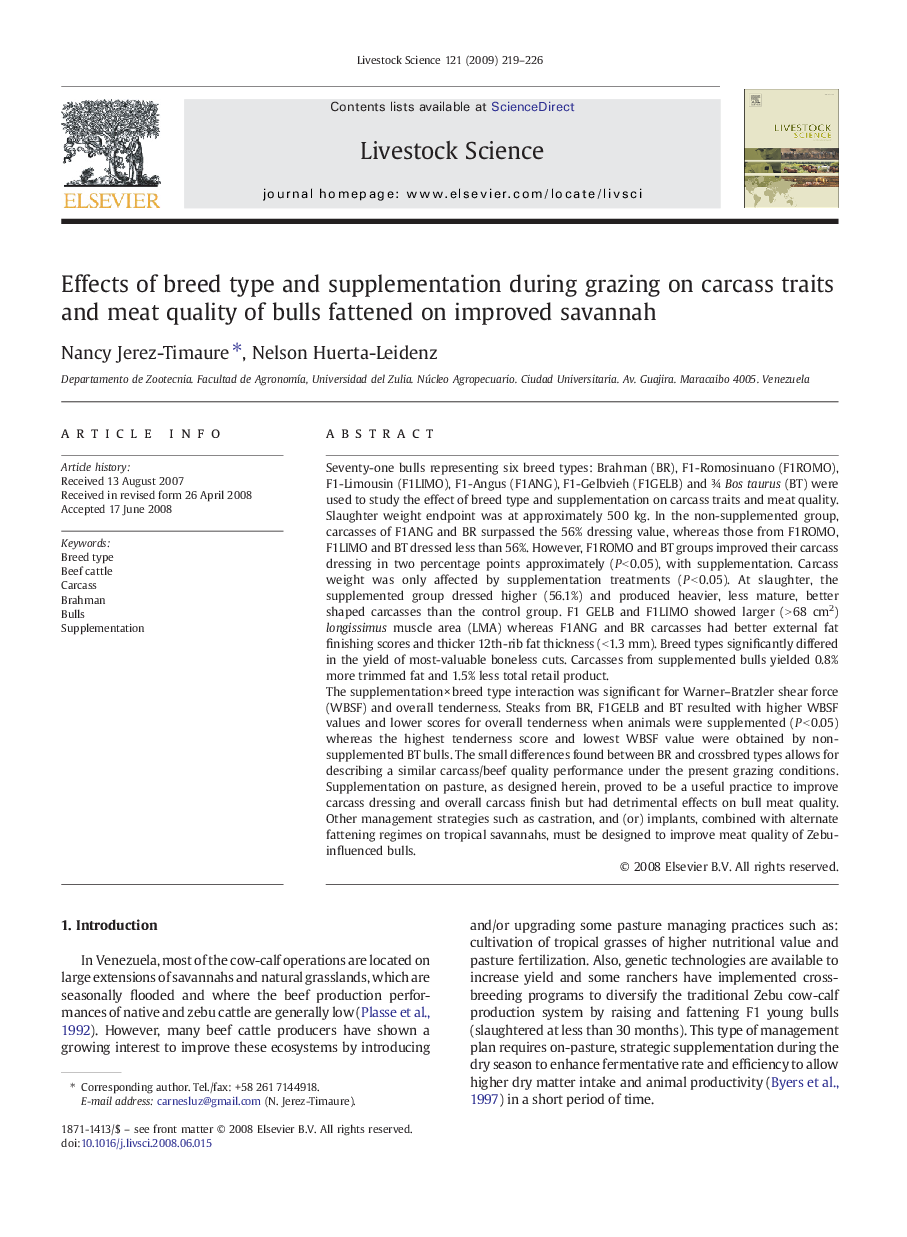| کد مقاله | کد نشریه | سال انتشار | مقاله انگلیسی | نسخه تمام متن |
|---|---|---|---|---|
| 2448267 | 1554011 | 2009 | 8 صفحه PDF | دانلود رایگان |

Seventy-one bulls representing six breed types: Brahman (BR), F1-Romosinuano (F1ROMO), F1-Limousin (F1LIMO), F1-Angus (F1ANG), F1-Gelbvieh (F1GELB) and ¾ Bos taurus (BT) were used to study the effect of breed type and supplementation on carcass traits and meat quality. Slaughter weight endpoint was at approximately 500 kg. In the non-supplemented group, carcasses of F1ANG and BR surpassed the 56% dressing value, whereas those from F1ROMO, F1LIMO and BT dressed less than 56%. However, F1ROMO and BT groups improved their carcass dressing in two percentage points approximately (P < 0.05), with supplementation. Carcass weight was only affected by supplementation treatments (P < 0.05). At slaughter, the supplemented group dressed higher (56.1%) and produced heavier, less mature, better shaped carcasses than the control group. F1 GELB and F1LIMO showed larger (> 68 cm2) longissimus muscle area (LMA) whereas F1ANG and BR carcasses had better external fat finishing scores and thicker 12th-rib fat thickness (< 1.3 mm). Breed types significantly differed in the yield of most-valuable boneless cuts. Carcasses from supplemented bulls yielded 0.8% more trimmed fat and 1.5% less total retail product.The supplementation × breed type interaction was significant for Warner–Bratzler shear force (WBSF) and overall tenderness. Steaks from BR, F1GELB and BT resulted with higher WBSF values and lower scores for overall tenderness when animals were supplemented (P < 0.05) whereas the highest tenderness score and lowest WBSF value were obtained by non-supplemented BT bulls. The small differences found between BR and crossbred types allows for describing a similar carcass/beef quality performance under the present grazing conditions. Supplementation on pasture, as designed herein, proved to be a useful practice to improve carcass dressing and overall carcass finish but had detrimental effects on bull meat quality. Other management strategies such as castration, and (or) implants, combined with alternate fattening regimes on tropical savannahs, must be designed to improve meat quality of Zebu-influenced bulls.
Journal: Livestock Science - Volume 121, Issues 2–3, April 2009, Pages 219–226